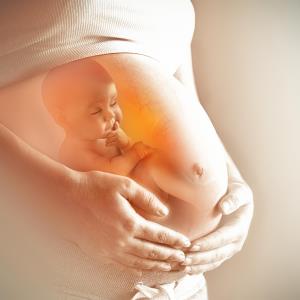News & Updates
Filter by Specialty:

Tenofovir alafenamide safe to use in breastfeeding mothers with CHB
The first human pharmacokinetic study of tenofovir alafenamide (TAF; commercially sold as Vemlidy) monotherapy in breastfeeding women with chronic hepatitis B (CHB) has found low concentrations of TAF and tenofovir in the breastmilk, with negligible exposure to infants.
Tenofovir alafenamide safe to use in breastfeeding mothers with CHB
16 Nov 2021
Symptomatic COVID-19 at pregnancy end tied to increased complications in mothers, infants
Expectant mothers with symptomatic COVID-19 upon hospital admission for delivery had a higher risk of emergency complications surrounding delivery, according to a small retrospective study from the US presented at Anesthesiology 2021. Furthermore, infants born to symptomatic mothers were more likely to require intensive care unit (ICU) admission or respiratory support.
Symptomatic COVID-19 at pregnancy end tied to increased complications in mothers, infants
12 Nov 2021
Peanut allergy guideline adherence remains low in US
Despite guidelines advocating earlier introduction of peanut in infants to avoid peanut allergy, adherence to these guidelines among children’s primary care providers (PCPs) remains suboptimal, according to a study from the US presented at ACAAI 2021.
Peanut allergy guideline adherence remains low in US
11 Nov 2021
Dyslipidaemia during pregnancy ups SGA risk
Dyslipidaemia and elevated biosynthesis of cholesterol, even during the first trimester of pregnancy, increase the risk of small for gestational age (SGA) neonates, a recent study has found.
Dyslipidaemia during pregnancy ups SGA risk
07 Nov 2021
Outpatient management of jaundice needed to lessen paediatric ED visits
Neonatal jaundice (NNJ) and pyrexia (NNP) are the most common diagnoses in the paediatric emergency department (PED) and during discharge from the hospital, a Singapore study has observed. In addition, the rates of hospital admission and referral from polyclinics and other clinics are higher than those in other series, driven by different healthcare structure, protocols, and workflows in the different studies.




